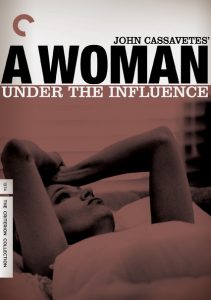Booksmart-2019
Director Olivia Wilde
Starring Beanie Feldstein, Kaitlyn Dever
Scott’s Review #1,113
Reviewed February 17, 2021
Grade: A-
I usually avoid teenage coming-of-age comedies, or more to the point, being not of that demographic, they are not usually even on my radar.
The only reason I saw Booksmart (2019) is for the Independent Spirit Award it won and the Golden Globe nomination it achieved. Still, I was skeptical of what the appeal of two female teenage bookworms who decide to become party animals would have on me.
Boy, was I wrong? The film is a fabulous and fast-paced experience that I enjoyed immensely.
Director Olivia Wilde, in her very first effort, delivers the goods, believe it or not. She takes a genre told to death and knocks it on its keister, offering a fresh and creative spin on a tried-and-true formula that feels anything but formulaic.
There is diversity, inclusiveness, and heart for miles without the feeling that these add-ons were done intentionally for a modern spin.
Before I get carried away too much Wilde carefully keeps the standard moments of teenage angst, rejection, breakups, and makeups, and there are one or two of the commonplace high school “types”- loner, jock, weirdo, etc. but evident is a strong LGBTQ+ stronghold including one of the leading female characters. Booksmart sure feels authentic to me.
Molly (Beanie Feldstein) and Amy are forever friends.
The girls study, they giggle, they hang out, and they share their problems, both sexual and otherwise, with each other. The kicker is that Molly is straight and Amy is gay. Amy is happily “out” and nobody gives a damn.
Her parents, played in small but juicy parts by Will Forte and Lisa Kudrow, are hilarious and progressive in their approach to understanding a gay child. They incorrectly assume that Molly and Amy are a couple, which the girls use to their advantage.
Anyway, Amy and Molly are intelligent and look forward to graduation day and attending great schools. Once they realize that their fellow students who, in their minds, slack off and party, are also going off to Ivy League schools, they panic.
They realize they have wasted four years studying and decide to finally let their hair down the night before graduation, intent on attending a popular boy’s (and Molly’s crush) party.
The situations the duo get themselves into are clever and witty, and the most fun in the film. Feldstein and Dever have exceptional chemistry, and I bought them as best friends from the moment of their first scene.
When they have a knock-down, drag-out argument towards the end of the film, it’s acting at its finest, which made me feel proud.
I admire young talent with great acting chops and pride in their craft, and Feldstein and Dever both have it.
Wilde peppers much of the film with hip and trendy pop songs that surprisingly enhance rather than detract from the viewer’s enjoyment. The lyrics match the specific events of the particular scene.
The romanticism is pivotal as the crushes Molly and Amy have are not necessarily who they wind up with at the end of the film, which naturally culminates on graduation day. I love how their ceremony includes no parents.
The creativity within Booksmart is admirable.
When Molly and Amy trip on a hallucinogen, they accidentally imagine they are Barbie dolls. The scene is laden with hilarity as they bend, twist, and turn. Later, Molly imagines a dance with Nick amid a colorful, slow-motion sequence that is beautiful, while Amy has an awkward, unexpected sexual experience with a mean girl.
Booksmart (2019) is quite R-rated, almost shockingly so, which is not a negative. It’s a positive. Too many films of this ilk try to soften how teenagers speak and the feelings they have, which are usually sexual.
It’s raunchy and not for the younger teen set, but mature audiences will reminisce about their high school days.
Independent Spirit Award Nominations: 1 win-Best First Feature (won)
























